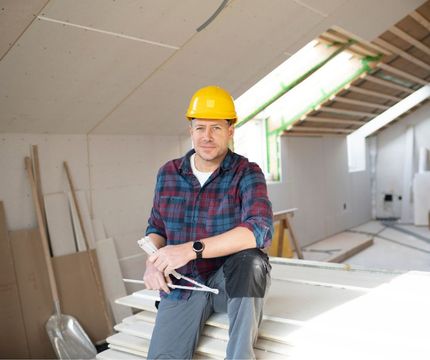Professional Sheetrock Repair Fort Worth for Quick Fixes
Professional Sheetrock Repair Fort Worth for Quick Fixes
Blog Article
Total Guide to Efficient and Dependable Drywall Setup
Drywall installation is a vital element of any type of building or improvement job, requiring a meticulous technique to make sure both effectiveness and dependability. It is essential to discover the subtleties of each step in the process, as they collectively contribute to the total success of the drywall setup.
Important Tools for Drywalling
When beginning on a drywall installation project, having the right devices is crucial for attaining an expert finish. Necessary devices include a drywall knife, tape procedure, and a T-square, which are essential for accurate measurements and smooth cuts. A drywall lift is likewise highly useful, particularly for ceiling setups, enabling less complicated handling of hefty panels.
For fastening the drywall, a cordless drill and drywall screws are needed. The drill should be outfitted with a drywall little bit to ensure effectiveness and precision. Furthermore, an essential device is the drywall saw, which promotes cutting around various other barriers and electrical outlets.

Furthermore, safety gear such as shatterproof glass and a dirt mask are necessary to make sure individual safety and security during the installment process. Using the right devices not only enhances the top quality of the installment but also simplifies the operations, making the project much more efficient overall.
Preparing the Space

Next, analyze the problem of the wall surfaces and ceilings. Repair any type of existing damage, such as openings, cracks, or peeling off paint, to make sure a smooth and even surface area for drywall application. Furthermore, look for electric outlets, plumbing lines, and HVAC ducts, noting their places to stay clear of issues during installation.
It is also crucial to determine the space precisely, identifying the dimensions of the ceilings and walls to compute the suitable amount of drywall needed. Create a thorough plan that consists of the format and positioning of the drywall panels.
Setup Strategies
Reliable setup techniques are essential for achieving an expert finish in drywall jobs. Appropriate measurement and cutting of drywall sheets are essential actions. Always measure the wall surface area precisely, permitting any type of outlets or buttons. Use an energy knife for tidy cuts, racking up the paper official source face and breaking the board along the scored line.
When hanging drywall, start from the top and work downward, ensuring that the long edge of the board is perpendicular to the framework. Secure the sheets with screws as opposed to nails, which offer higher holding power and minimize the risk of popping. Place screws every 12 inches along the edges and every 16 inches in the field of the board.
For corners, utilize corner beads to achieve sharp, clean sides. When mounting on ceilings, make use of a drywall lift or have a partner aid in holding the sheets in position (drywall fort worth). Maintain a void of concerning 1/4 inch over the floor and ceiling to accommodate growth and tightening
Finishing Touches

When the tape is in place, it's time to apply the first layer of joint substance, also known as mud. Make use of a 10 to 12-inch taping blade to spread out the compound uniformly over the taped seams, feathering the sides to blend with the bordering drywall.
Enable the compound to dry thoroughly, typically 24 hr. After drying, sand the surface gently with fine-grit sandpaper to eliminate any type of imperfections. drywall installation. Repeat the mudding and sanding procedure, usually 2 to 3 layers, ensuring each layer is smooth and flush with the drywall surface
Common Mistakes to Stay Clear Of
Many do it yourself lovers encounter pitfalls throughout drywall installation that can jeopardize the outcomes. One usual mistake is stopping working to correctly gauge and cut drywall sheets. Inaccurate cuts can result in spaces and uneven seams, making completing extra labor-intensive. Furthermore, disregarding to surprise joints can develop powerlessness in the wall surface, resulting in potential sagging or breaking with time.
One more regular error is improper fastening. Utilizing too few screws or nails can bring about loose drywall, while overdriving fasteners can create the paper to tear, compromising the structure. It's essential to preserve constant spacing, usually every 16 inches, and to ensure that bolts are flush with the surface.
In addition, not addressing dampness concerns before installment can result in mold and mildew development and structural damage. Always assess the setting and use moisture-resistant drywall in high-humidity locations.
Final Thought
Trusted and efficient drywall installment needs precise attention to detail throughout the process. Avoiding common errors further adds to an expert outcome, emphasizing the value of accuracy and method in effective drywall jobs.
It is important to explore the nuances of each action in the process, as they jointly add to the total success of the drywall installment.When getting started on a drywall setup job, having the right devices is crucial for achieving an expert surface.For attaching the drywall, a cordless drill and drywall screws are required.Correctly preparing the area is necessary for a successful drywall installation.Reliable installment strategies are crucial for achieving a professional surface in drywall tasks.
Report this page